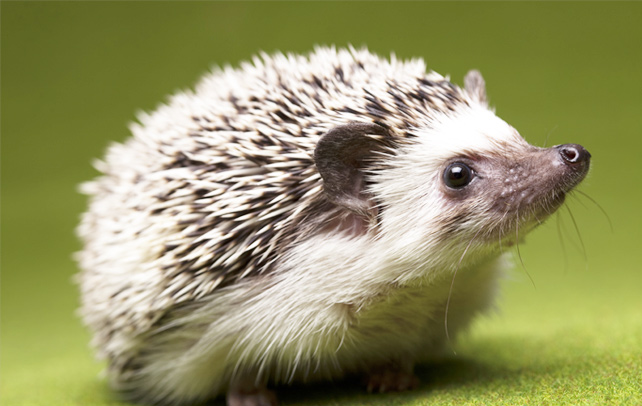Facts About Hedgehogs

A small hamster like animal made famous by the popular animated character Sonic, hedgehog, is a small animal with almost rodent like characteristics. This animal is native to Africa and from where it was brought to the European continent. These insectivores are basically found in farms and forest areas but these are also domesticated in a number of countries, even though they are protected species in several countries of Europe. These cute little creatures don’t have many enemies, but they are quite vulnerable at the time of their birth as these are born without the protective quills. The chiefly domesticated species of the hedgehog is the Pygmy Hedgehog which is a species native to the African continent, but available in pet shops all around the world today. But these cuties need a lot of care as they need to be fed with a specific diet and they also need specific types of housing too. One has to be really careful if one wants to keep them as pets.
Fast Facts
Type: Mammal
Diet: Insectivores
Size: 8-9 inches
Weight: 255 – 540 grams
Group Name: Erinaceidae
Lifespan: 4–7 years
Habitat: hedgerows, fields, open woods and gardens
Gestation Period: 35–58 days
Number of Offspring: 3–4 newborns
Facts About Hedgehogs
- Hedgehogs are considered to be insectivores, relying on insects for much of their dietary needs. They are, however, opportunistic feeders who will eat almost anything they find.
- Short, prickly spines cover a hedgehog’s entire back. Also known as quills, these defensive tools are really modified, hollow hairs and are not poisonous or barbed.
- When threatened, hedgehogs roll into a tight ball, protecting their face, eyes, limbs, and bellies.
- If necessary, a hedgehog can run over six feet per second. In fact, many hedgehogs will attempt to escape an attacker before they roll into a protective, spiny ball.
- Hedgehogs have very sensitive senses of smell and hearing. They can even hear in the ultrasonic range.
- Hedgehogs prefer to live apart from other members of their own species, however, can form a tight bond with their human counterparts.
- Hedgehogs prefer controlled periods of light and darkness, as well as undisturbed periods of rest.
- Hedgehogs thrive in warm temperatures (75° to 80°F).
- Hedgehogs hibernate in winter. They also sleep through long spells of heat in the deserts and dry places, through a process called aestivation, which is also known as ‘summer sleep’.
- The normal heartbeat of a hedgehog is 190 per minute which comes down to 20 per minute during hibernation.
- Hedgehogs have a strong sense of smell and hearing but they have weak eyesight.
- The male hedgehog is called a boar and the females are known as sows. Their offspring are known as hedgehogs.
- Baby hedgehogs have a high mortality rate. Smaller species have 3-4 offspring and larger species have 5-6. It is a relief to the sows that the hedgehogs are born without quills!
- Hedgehogs are born blind and their eyesight improves in about two weeks.
- Hedgehogs, when around 4-5 weeks old, leave their mother, as well as their nest.
- Hedgehogs love bananas and it is found that bananas help in their digestion.
- Hedgehogs swim, climb walls and can run with a speed of 4.5 mph.
- Only 1 hedgehog in 12,000 is born with no pigmentation due to a mutation in the gene.
- Hedgehogs are mildly intolerant to lactose.
- Hedgehogs can also suffer from cancer. The sows may suffer from ovarian, uterine and mammary tumours and the boars may suffer from jaw and testicular cancer.
- Interestingly, in ‘The Tale of Mrs. Tiggy-Winkle’ by Beatrix Potter, the main character is a hedgehog and is seen ironing or starching shirts.
- As animals native to Europe, hedgehogs hold a rightful place in European folklore. Since the mammal did not possess any “righteous” qualities, it never made it to the court art; however, its relationship with fairy tales has been a long and fruitful one.
- When confronted with an interesting scent, the hedgehog will lick and bite the object, creating scented saliva in its mouth. They will then smear this spittle along their spines. This is called “self-anointing.” Scientists don’t know why hedgehogs do this.
- Hedgehogs are more commonly being kept as pets, although numerous states and countries have restrictions, but they are not easy to care for as they require a specific diet and housing.
- Studies show that the female hedgehog is friendlier than the male hedgehog; the male hedgehog tends to guard his domain.
- The hedgehog ‘clicks’ when it is trying to threaten you. That usually means ‘get away’ or ‘don’t touch me’.









